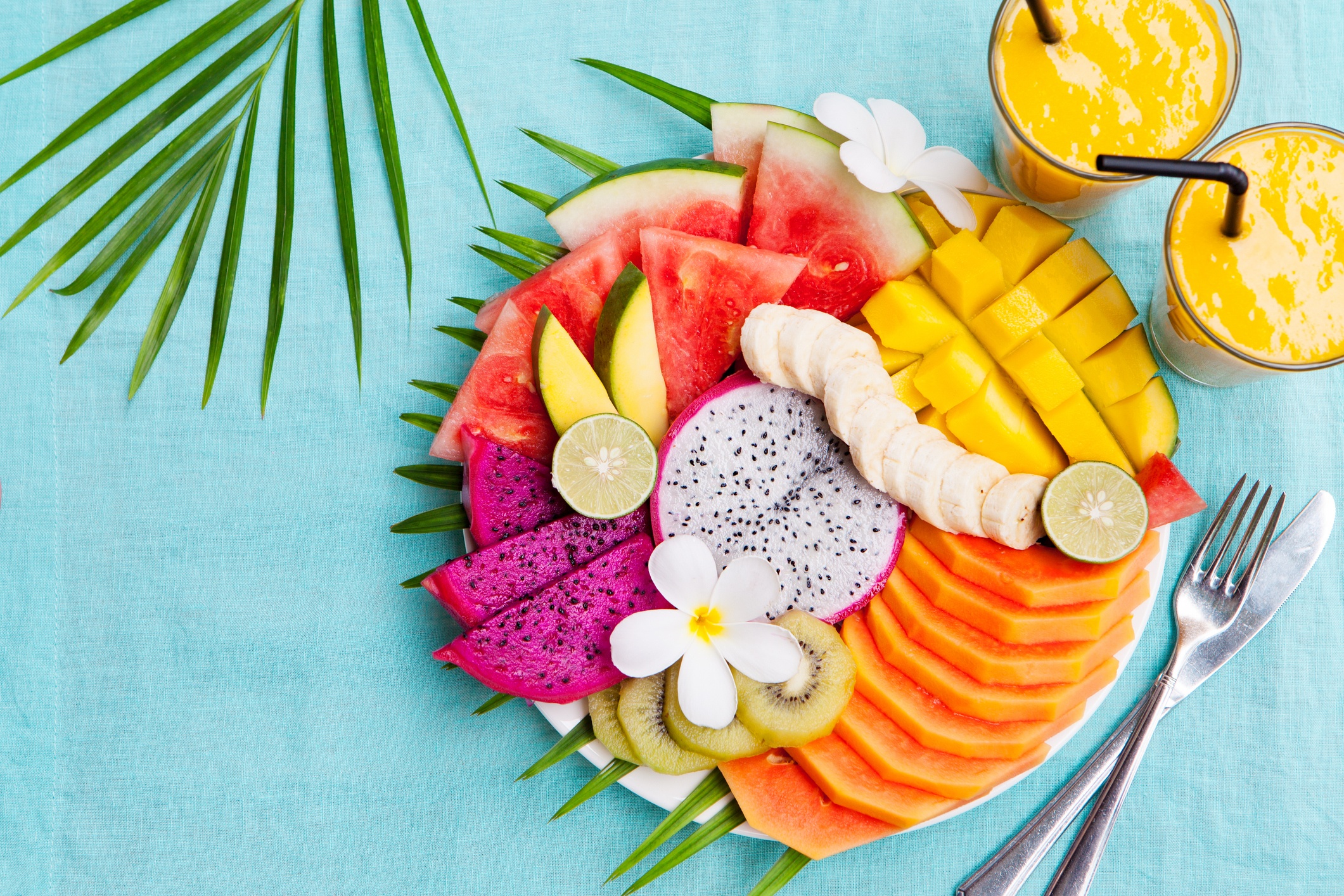This summer is ripe for tropical fruit, pun intended.
Get ready for dragon fruit, guava, ube, tamarind and guanabana flavored food and drinks this summer, as brands turn to innovation to drive consumer interest.
And don’t forget the heat. More spice is on the way, too, according to Daymon’s March 2024 Flavor Study.
One in four shoppers say watermelon is their favorite summer flavor, while one in five shoppers prefer strawberry. But the innovative opportunities lie in tropical flavors, with 75% of consumers citing they are interested in trying them. Dragon fruit has nearly six in 10 shoppers’ interest, guava has five in 10, and more obscure flavors like ube, tamarind and guanabana are also on consumer radar as flavors of interest.
Latinx shoppers in particular over-index in interest for tropical fruit flavors. For instance, 46% of Latinx shoppers are interested in tamarind, and another 31% have direct interest in guanabana, also called soursop or pawpaw.
What is driving these new flavor profiles?
Despite tighter budgets, consumers are more optimistic about their spending, and they’re seeking out little luxuries that excite them. Shoppers are especially open to trying new products if they’re on sale or being sampled. In fact, 59% of shoppers are motivated by a promotional tag. Another 52% are motivated by sampling, which is most influential when it comes to inspiring trials for new products or flavors.
Have some of these new flavors already made their way into shelves?
Certainly – most especially in more progressive and trend-focused retail environments. We’re also seeing something called dynamic pairings, which means combining two flavors to create a unique new flavor.Shoppers view that as exciting, and by connecting a less well-known flavor with one that consumers already know and understand, the familiarity can help to convert purchases. For example, guava-strawberry is an innovative dynamic pairing connecting guava, a tropical fruit with a tangy sweet flavor, with well-liked strawberry – creating something new, different and intriguing for shoppers.
Are there certain products that retailers can lean into when considering new seasonal flavors?
It is more strategic to play seasonal flavors within certain categories, and always best aligned to retailer objectives. Beverages are usually a good one to look at. Sparkling water, for instance, makes sense during summer. Packaged foods like yogurt and snacks are also big opportunities for retailers and brands to drive the newness that consumers crave.
Are people of a certain age more likely to go for specific summer flavors?
As we know, younger shoppers are part of the most culturally diverse generation yet. Flavor preferences have changed drastically between generations. Gen Z and Millennials’ desire for spice, for adventure, for global cuisine in general, has skyrocketed, and that’s really shifted the landscape for anyone in the food business.
Just about half of Gen Z and Millennials say they’re interested in “fruity” for new food and drink flavor options. They’re also the most interested in tropical, with 88% saying they would seek out and have interest in trying tropical fruit flavors. This continues to track with our predictions from Daymon’s 2023 Future of Flavor report, indicating that tropical flavors like ube and guanabana are ripe for growth.
Specifically, some 75% of Gen Z and 73% of Millennials are interested in dragon fruit. That’s followed by interest in guava, tamarind, ube and guanabana. A whopping 90% of Gen Z and Millennials say they purchase products with seasonal flavors, and they do so more frequently than other shoppers.
Tell us about spice.
Spice up your life. The demand is high for shoppers who want to feel the heat in what they eat and drink this summer – and beyond.
I was blown away to learn that one-third of shoppers said they’re always open to trying a new type of spice. This speaks to the level of adventure that consumers not only enjoy but are beginning to demand. They’re increasingly loyal to retailers and brands that feed their level of adventure, and that’s happening from quick-service restaurants all the way down to consumer brands found in the grocery store.
Some 43% of all shoppers say they regularly eat and enjoy spicy foods, and another 41% eat spicy food sometimes. That’s 84% of consumers who say they eat spicy food. Look to younger shoppers specifically, and we again find increased demand, with 61% of Gen Z and 55% of Millennials saying they regularly eat and enjoy spicy foods.
The most popular level of heat enjoyed by spice enthusiasts is medium, and the flavors of heightened interest are spicy garlic (47%), hot honey (41%), and spicy mustard (36%). Other spicy flavors on the rise are chili-lime, habanero and jalapeno, Nashville hot, and Kung Pao.
“Swicy” is also interesting. Swicy, if you’ve never heard of it, combines sweet and spicy as a flavor profile. And 53% of Gen Z shoppers say they enjoy swicy heat.
How can Daymon bring retailers value vis a vis innovation or new flavors?
We just talked a lot about food, but Daymon also has expertise in working with retailers and brands to develop seasonal non-foods. That includes seasonal scents or design spanning personal care, air care, home goods, pet care products and many categories in between. Our expertise spans across retail channels, providing end-to-end services from insights and analytics that support custom program strategy, to best-in-class global sourcing and product development capabilities – including design and quality assurance. Private Brands offer unrivaled opportunities to drive loyalty and differentiation, and Daymon helps ensure optimal program success.
Watch for Daymon’s updated Future of Flavor report coming Summer 2024.
